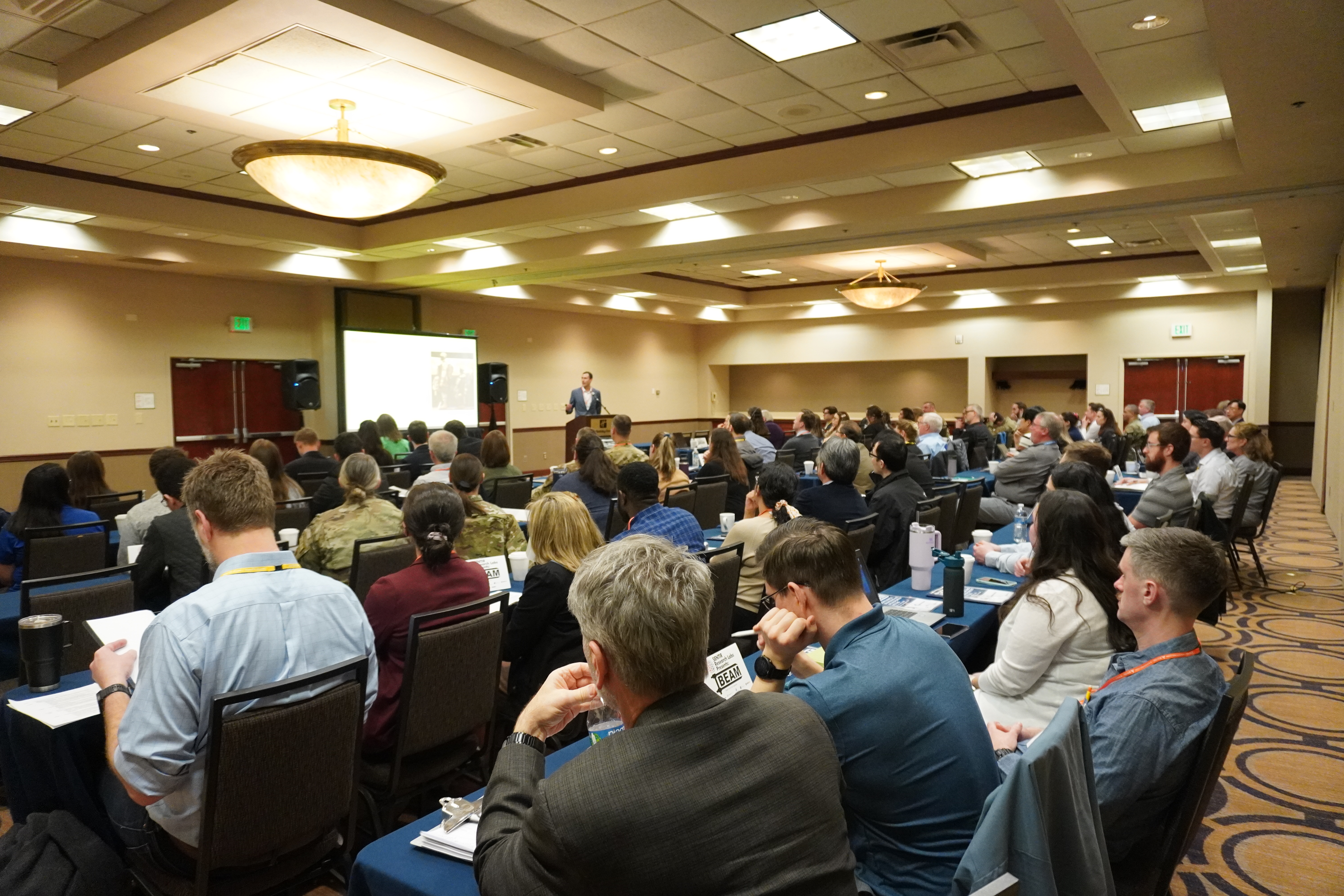
March 22, 2024
Fairborn, OH – In a groundbreaking initiative aimed at enhancing mission effectiveness and safety across various sectors, STI-TEC hosted the inaugural Biomechanical Engineering and Anthropometry Meeting (BEAM). Cassie Mullenger (STI-TEC) organized this event which brought together leading experts from government, industry, and academia, to delve into the critical role anthropometry plays in shaping defense systems and strategies.
In support of the DoD’s emphasis on model-based systems engineering (MBSE), the meeting showcased a series of engaging sessions, including keynote addresses, panel presentations, moderated breakout discussions, and individual presentations, highlighting the latest research and innovations in the field. Dr. Barry Shender, a distinguished anthropometry expert, shared groundbreaking research on human size and shape variation in military contexts. Chief Chris Dawson (USAF) provided valuable insights into the broader implications of anthropometric research for mission effectiveness and safety particularly as this community works together to remove barriers for women in the military and provide a safer environment.
Various panel sessions were organized that featured, for instance, military service representatives discussing the profound impact of anthropometry on equipment design, injury prevention, and database development within their respective branches. Additional panels brought together experts from government, academia, and industry to explore collaborative efforts and innovative approaches to address challenges related to human size and shape variation.
Overall, the BEAM event provided a comprehensive platform for stakeholders to exchange knowledge, foster collaboration, and drive advancements in leveraging anthropometric research to maximize mission effectiveness and safety. The event also underscored the importance of the ongoing effort to understand human size and shape variation and its implications across diverse sectors, from defense to academia and beyond. Overall, a meeting between biomechanical engineers and anthropometry experts has the potential to foster interdisciplinary collaboration, drive innovation, and advance the understanding of human movement and physiology.

